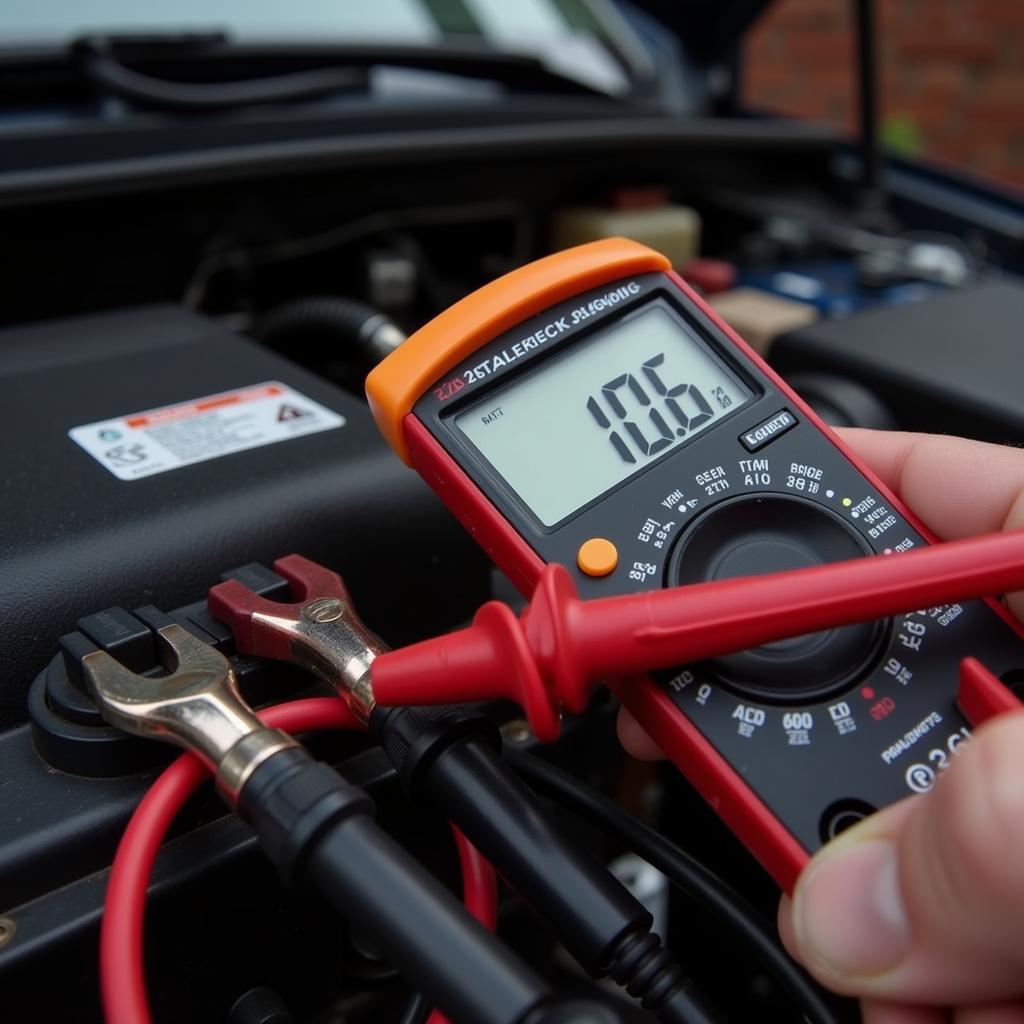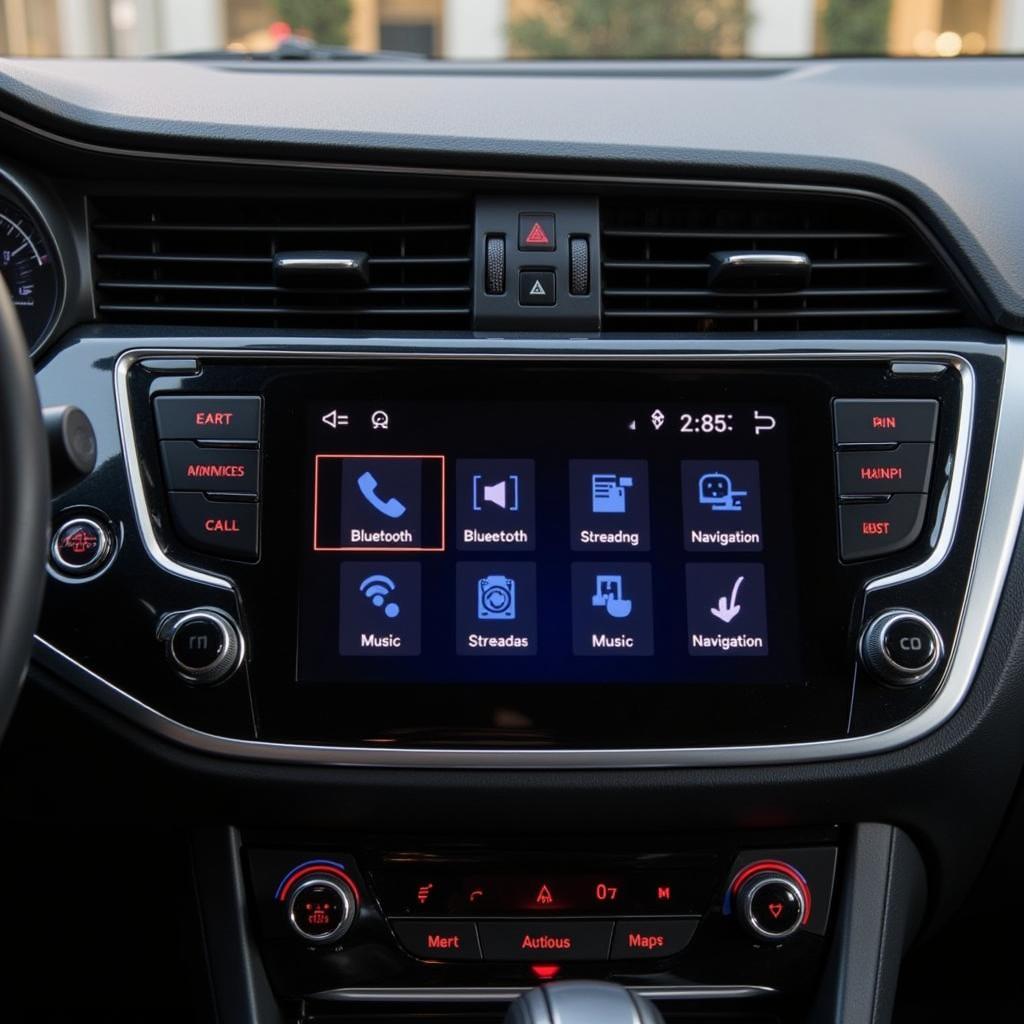The Jaguar F-Pace is a luxury SUV known for its sleek design and powerful performance. However, like any vehicle, it can experience issues, and one common problem reported by owners is battery-related concerns. These problems can manifest in various ways, from slow starting to complete electrical failure.
This comprehensive guide delves deep into the various “F-Pace battery problems,” providing valuable insights into the causes, symptoms, diagnostic procedures, and potential solutions. Whether you’re experiencing issues yourself or simply want to be informed, this guide offers expert advice to help you navigate the complexities of F-Pace battery problems.
Understanding Your F-Pace Battery and Its Importance
Before we delve into the problems, it’s crucial to understand the vital role your F-Pace’s battery plays. The battery is the heart of your vehicle’s electrical system, responsible for:
- Starting the engine: The battery provides the initial surge of power needed to crank the engine and initiate the combustion process.
- Powering electrical components: From headlights and interior lights to the infotainment system and power windows, the battery supplies power to all the electronics when the engine is off or running at low RPM.
- Stabilizing voltage: The battery acts as a voltage stabilizer, ensuring a consistent electrical supply to prevent damage to sensitive electronic components.
Common F-Pace Battery Problems
A malfunctioning battery can disrupt your driving experience and lead to unexpected breakdowns. Here are some common battery-related issues reported by F-Pace owners:
- Slow engine cranking: If your engine takes longer than usual to crank or struggles to turn over, it could indicate a weak or dying battery.
- Frequent jump-starts: Needing to jump-start your F-Pace frequently is a telltale sign of a battery problem. It suggests the battery isn’t holding a charge effectively.
- Dashboard warning lights: The appearance of warning lights on your dashboard, such as the battery warning light or the check engine light, can indicate a charging system or battery problem.
- Electrical malfunctions: Experiencing flickering lights, slow power window operation, or intermittent failure of electronic components can also be attributed to battery issues.
- Swollen battery case: A physically swollen or bloated battery case is a serious red flag indicating internal damage and potential safety hazards.
Causes of F-Pace Battery Problems
Identifying the root cause of your F-Pace battery woes is crucial for effective troubleshooting. Here are some potential culprits:
- Battery age: Like any battery, your F-Pace’s battery has a limited lifespan. The typical car battery lasts around 3-5 years, depending on usage and climate conditions.
- Parasitic drain: Even when your car is off, certain electrical components can continue to draw a small amount of power from the battery, leading to a slow discharge over time. This is known as parasitic drain.
- Extreme temperatures: Both extreme heat and cold can negatively impact battery performance and lifespan. Heat can accelerate the battery’s internal chemical reactions, while cold can reduce its capacity to hold a charge.
- Loose or corroded battery terminals: Corrosion on the battery terminals or loose connections can disrupt the flow of current, leading to charging problems and other electrical issues.
- Faulty alternator: The alternator is responsible for recharging the battery while the engine is running. A failing alternator will not charge the battery properly, leading to a drained battery and potential starting problems.
Diagnosing F-Pace Battery Problems
Proper diagnosis is essential before attempting any repairs or replacements. Here are some steps to diagnose battery-related problems:
- Visually inspect the battery: Check for any signs of physical damage, such as cracks, bulges, or leaks. Also, examine the battery terminals for corrosion or loose connections.
- Test the battery voltage: Use a multimeter to check the battery’s voltage. A fully charged battery should read around 12.6 volts. A reading below 12 volts indicates a discharged battery.
- Check the charging system: With the engine running, use the multimeter to check the voltage across the battery terminals. A healthy charging system should read between 13.7 and 14.7 volts.
- Load test the battery: A load test puts a controlled load on the battery to assess its ability to deliver current under stress. This test is best performed at an auto parts store or mechanic.
Solutions for F-Pace Battery Problems
The solution to your F-Pace battery problem depends on the underlying cause. Here are some potential fixes:
- Battery replacement: If the battery is old, damaged, or fails the tests mentioned earlier, replacement is often the most viable option.
- Charging the battery: A discharged battery can often be revived by charging it with a compatible battery charger. However, keep in mind that this is a temporary fix if the underlying cause isn’t addressed.
- Cleaning battery terminals: If you notice corrosion on the battery terminals, clean them with a baking soda and water solution using a wire brush.
- Addressing parasitic drain: Identifying and fixing parasitic drain requires specialized knowledge and tools. It’s recommended to consult a qualified mechanic for diagnosis and repair.
- Alternator replacement: If the alternator is faulty and not charging the battery properly, it will need to be replaced.
Remote Software Installation for Certain Battery-Related Issues
In some cases, certain battery-related problems in the F-Pace, particularly those related to software glitches or communication errors within the vehicle’s electrical system, can be addressed remotely.
As an expert in automotive electrical engineering specializing in remote diagnostics, programming, and software installation, I can often provide solutions without the need for a physical visit. By remotely accessing your F-Pace’s onboard computer, I can diagnose software-related battery issues, install necessary software updates, or make adjustments to the vehicle’s electrical system settings.
This remote service offers convenience and efficiency, potentially saving you time and hassle. If you suspect a software-related battery problem, contact a specialist like myself to explore remote diagnostic and programming options.
Preventing Future F-Pace Battery Problems
Prevention is key to avoiding frustrating battery issues in the future. Here are some proactive measures you can take:
- Regular battery maintenance: Inspect your battery terminals regularly for corrosion and clean them as needed. Ensure the battery connections are secure and free of debris.
- Limit short trips: Short trips prevent the alternator from fully charging the battery. If you frequently drive short distances, consider taking your F-Pace on a longer drive periodically to allow the battery to charge completely.
- Turn off accessories when not in use: Avoid leaving headlights, interior lights, or other electrical accessories on when the engine is off to minimize battery drain.
- Be mindful of extreme temperatures: Whenever possible, park your F-Pace in a garage or shaded area to protect it from extreme heat and cold.
- Consider a battery maintainer: If you store your F-Pace for extended periods or live in an area with extreme temperatures, using a battery maintainer can help prolong the battery’s lifespan.
Conclusion
Your Jaguar F-Pace’s battery is vital to its performance and reliability. Understanding the common battery-related problems, their causes, and potential solutions can help you address these issues proactively and keep your F-Pace running smoothly. Regular maintenance, timely repairs, and proactive prevention are key to a long and trouble-free ownership experience. If you’re ever in doubt or suspect a battery problem, consult a qualified mechanic or an automotive electrician for expert diagnosis and repair.



